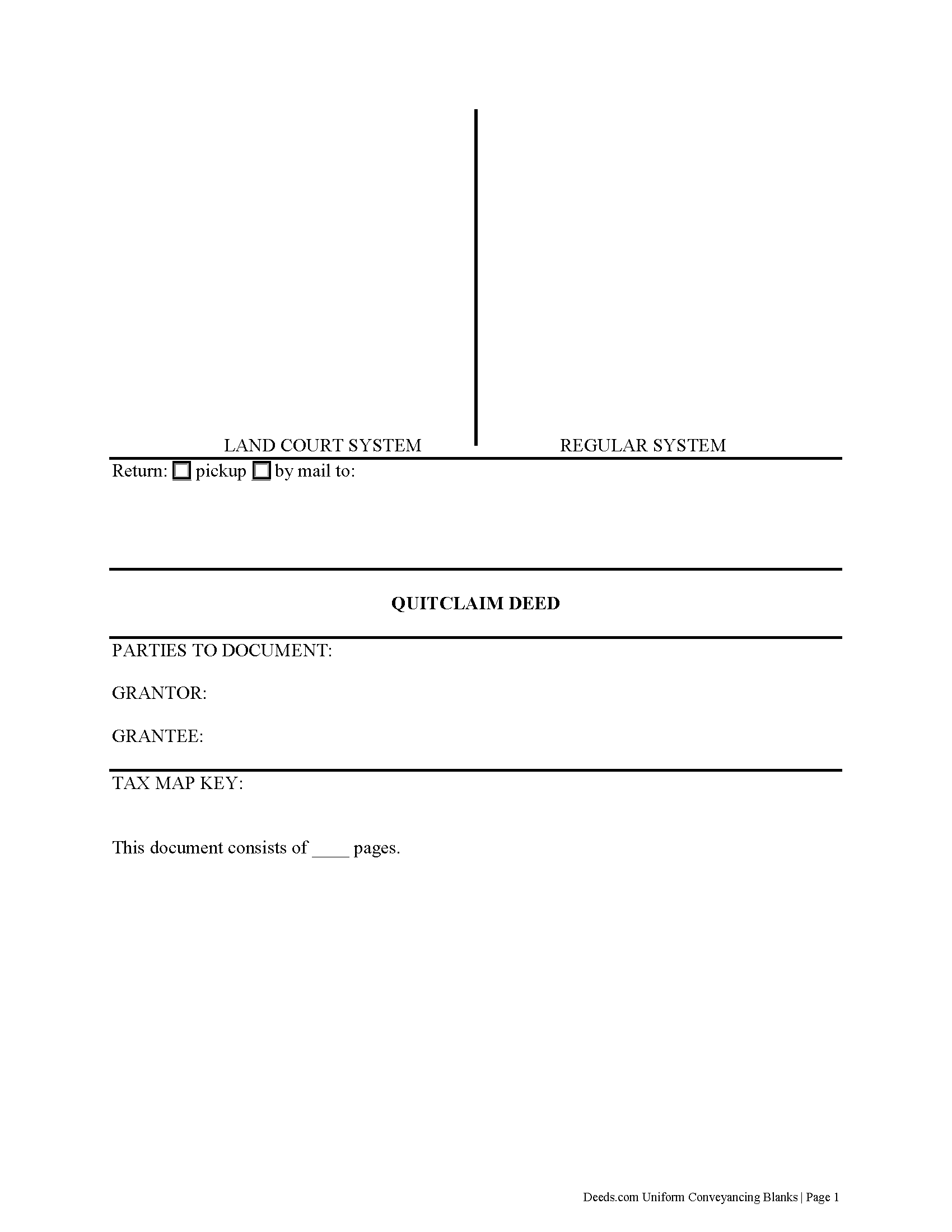Download Hawaii Quitclaim Deed Legal Forms

Hawaii Quitclaim Deed Overview

A quitclaim deed is a legal document used to transfer, or convey, rights in real property from a grantor (seller) to a grantee (buyer). In this type of deed, the grantor does not warrant that he or she owns the property; the grantor is only transferring the property. As there is no guarantee of a clear title, quitclaim deeds provide very little protection for grantees. Once acknowledged or proved and certified as provided, record the deed with the Bureau of Conveyances (BOC) office where the property is located.
Hawaii maintains two separate systems for recording: Land Court (Torrens) and Regular System. The BOC processes documents for both Land Court and Regular System. Check the prior deed to determine which system to record in. A label appearing in the upper left-hand corner signifies recording in the Land Court system; a label in the upper right-hand corner signifies recording in the Regular System. If both sides contain labels, the deed is dual-system recorded. Make sure to record in the correct system, and consult the BOC or an attorney with any questions. Registered land, and the ownership thereof, is subject to the same burdens and incidents that are attached to unregistered land (HRS 501-81).
Every conveyance that is not recorded is void as against any subsequent purchaser, lessee, or mortgagee in good faith and for a valuable consideration, not having actual notice of the same real estate or portion thereof, or interest therein, whose conveyance is first duly recorded (HRS 502-83).
Quitclaim deeds must include the grantor's full name and marital status, as well as the grantee's full name, marital status, mailing address, and vesting. Vesting describes how the grantee holds title to the property. For Hawaii residential property, the primary methods for holding title are tenancy in common, joint tenancy, and tenancy by the entirety. An estate conveyed to two or more people, including spouses, is considered a tenancy in common, unless the conveying instrument explicitly expresses otherwise (HRS 509-1).
A lawful quitclaim deed must also be signed by the grantor and must have an acknowledgement endorsed on it or attached to it in the form provided or authorized by sections HRS 502-42 or HRS 502-45 (HRS 502-41). Acknowledgements can be made in Hawaii or in another state. Consult the State of Hawaii Department of Land & Natural Resources Bureau of Conveyances for a checklist of requirements before submitting the deed for recording.
Pursuant to HRS 18:247-1, documents conveying real property are subject to a documentary transfer tax. All documents subject to transfer tax must be accompanied by Form P-64A (HRS 18:247-6(a)). All documents exempt from transfer tax must be accompanied by Form P-64B (HRS 18:247-6(b)). See HRS 18:247-3 for a list of documents exempt from the tax.
This article is provided for informational purposes only and is not a substitute for the advice of an attorney. Contact a lawyer with questions about quitclaim deeds or for any other issues related to the transfer of real property in Hawaii.